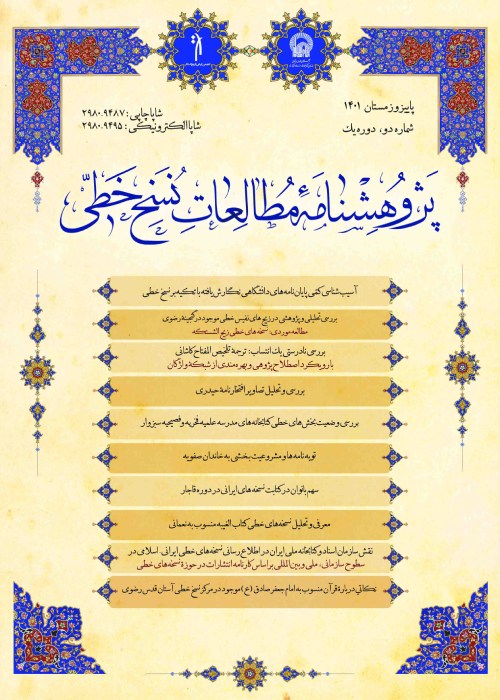Review and Evaluation of Manuscript Cataloging Methods in Afghanistan
The present study is intended to review and evaluate the published catalogs of Afghan collections from 1314 Sh. /1935 AD up to 1399 Sh. /2020 AD, so that in addition to recognizing the characteristics of cataloging in contemporary Afghanistan, the level of compliance with the DCRB standard in them is also determined.
Research Method/Approach:
This research is of applied type and conducted by survey method. The lists published in the form of single articles and independent monographs until 1399/2020 were reviewed through a checklist and based on the DCRB standard. The lists have been evaluated in three categories: lists of Afghan collections; the lists prepared by foreign catalogers from Afghan collections; and the lists prepared by Afghans from collections abroad.
The findings indicated that in terms of cataloging method, two parts of bibliography and codicology are seen in all descriptive lists. But in most lists, these two parts are not completely separated. Besides, the amount of the manuscript description is different. In this regard, 64 percent of Afghanistan’s lists are of descriptive type and 36 percent are of non-descriptive type. In terms of the structure of the list, 70 percent of the lists are organized according to the title of the manuscript.On average, the descriptive catalogs authored by domestic catalogers conform to the DCRB standard by 61 percent and the catalogs authored by foreign catalogers conform by 59 percent. Further results showed that the list of manuscripts of the National Archives by Afzali and Nayyir (1364-67/1985-88) by 77 percent, Keller’s list (1395/2016) by 75 percent and Parwanta’s list (1322/1943) by 72 percent are the most compatible with cataloging standards. After that, the list of Afzali (1363/1984), Abdurrahman Doust (1397/2018) and Moshtari (1365/1986) have the highest compliance with the above-mentioned standard by 67 percent. Also, there was a complete pause in cataloging manuscripts in two periods of time: 1. The forty-year period (1312-1352/1933-1973) of Mohammad Zaher Shah’s reign; 2. During the civil wars and the first round of the Taliban’s rule from the late 60’s/80’s to the early 80’s/2000’s. War and political and social unrest, inappropriate cultural policies, lack of experts and codicologists, and the lack of understanding the importance of manuscripts as a national heritage by the cultural policy-makers seem to be the factors behind the slowdown and cessation of cataloging manuscripts in Afghanistan.
- حق عضویت دریافتی صرف حمایت از نشریات عضو و نگهداری، تکمیل و توسعه مگیران میشود.
- پرداخت حق اشتراک و دانلود مقالات اجازه بازنشر آن در سایر رسانههای چاپی و دیجیتال را به کاربر نمیدهد.



